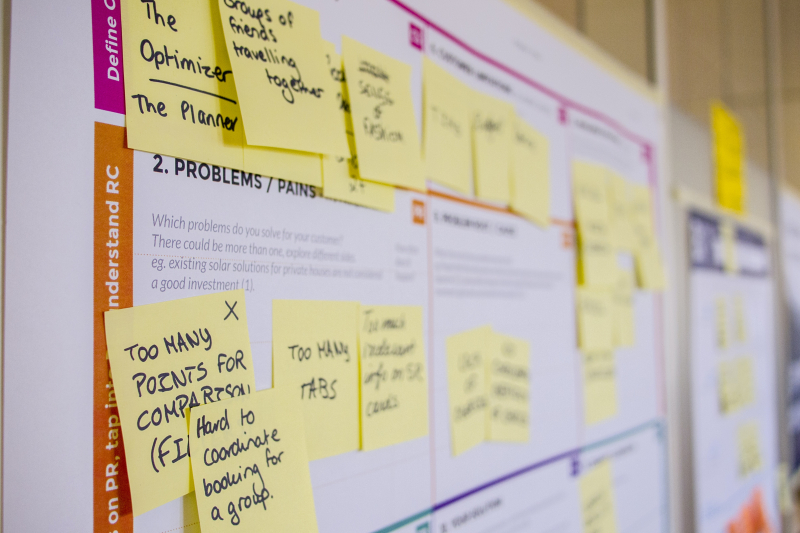Top 15 Best Tips for Writing an Classification Essay
Classification essays require a thoughtful approach to categorizing and organizing information. Whether you're classifying types of literature, historical ... read more...events, or scientific phenomena, mastering the art of classification writing is essential for conveying ideas clearly and effectively. Here are the best tips to guide you in crafting a successful classification essay.
-
Understanding the purpose of a classification essay is foundational for anyone venturing into this form of academic writing. The primary objective of a classification essay is to methodically categorize subjects based on a specific principle and articulate the classification in a coherent and organized manner. By leveraging this approach, writers can effectively provide a comprehensive insight into a particular topic, making it more understandable and relatable to the audience.
For example, if the topic is "Types of Musical Instruments", the purpose will be to categorize musical instruments based on common characteristics such as the method of sound production (string, percussion, wind instruments), leading to a better understanding of the diverse nature of musical instruments and their roles in music.
Understanding this purpose empowers writers to be intentional in their categorization process, ensuring that the principle of classification is evident and that the essay flows logically. It allows for the selection of appropriate examples and illustrations to represent each category. Such an understanding provides a roadmap for presenting information systematically and coherently, ensuring that the readers can comprehend and appreciate the categorized information in a meaningful way. By adhering to this purpose, the writer can effectively convey the categorization of the subject matter, enriching the reader's understanding and knowledge of the topic at hand.

Image via unsplash.com 
Image via unsplash.com -
Selecting a strong topic is the next step. It is important to choose a subject that allows for the creation of clear and distinct categories. When selecting a topic, it's essential to strike a balance and avoid extremes. A topic that is too broad may lead to overly general categories that lack depth, while an overly narrow topic might limit the potential for meaningful classification.
For example, if the chosen topic is "Types of Travel Destinations," the categories could include "Urban Destinations," "Beach Getaways," and "Adventure Travel Locations." These categories allow for a comprehensive classification without being overly broad or too narrow, providing ample room for detailed exploration within each classification.
To ensure success, consider various potential topics and evaluate them based on their ability to be effectively categorized. Assess whether each topic lends itself to well-defined categories that can be adequately developed and differentiated within the essay.
By selecting a topic that strikes the right balance, the writer can effectively engage the audience by presenting a well-organized and insightful classification essay. This approach ensures that the essay remains focused and allows for in-depth exploration of the distinct categories, providing a richer and more meaningful reading experience.

Image via unsplash.com 
Image via unsplash.com -
The initial stages of writing a classification essay are crucial, with research and brainstorming forming the foundation of a successful composition. Thorough research on the chosen topic is essential to identify potential categories and gather relevant examples that accurately represent each category. In the case of a classification essay on travel destinations, comprehensive research could involve exploring a wide range of places, considering factors such as geographical location, cultural significance, tourist attractions, and recreational activities. This detailed research provides writers with a rich pool of information from which to draw potential categories and examples.
Moreover, engaging in robust brainstorming sessions allows writers to generate a comprehensive list of possible categories before making final selections for inclusion in the essay. For instance, when focusing on travel destinations, brainstorming may yield categories such as "Beach Getaways," "Historical Landmarks," "Adventure Travel," and "Urban Exploration." By documenting all potential categories, writers can carefully evaluate each one's suitability for inclusion in the essay, ensuring that the chosen categories align with the essay's overall purpose and provide a diverse representation of the topic.
Ultimately, the combination of thorough research and effective brainstorming empowers writers to make informed decisions about the categories and examples that will shape their classification essay. This diligence in the early stages of the writing process serves to establish a strong foundation for the essay, laying the groundwork for a well-organized and compelling exploration of the chosen topic.

Image via unsplash.com 
Image via unsplash.com -
Developing a strong thesis statement is the fourth step in creating a well-structured classification essay. The thesis statement acts as the foundation upon which the entire essay is built, providing a roadmap for both the writer and the reader. It should concisely outline the main categories and present a clear overview of the essay's purpose. By crafting a compelling thesis statement, writers can effectively guide their readers through the classification process and establish the central focus of their essays.
For example, when writing a classification essay on types of music, a thesis statement could be: "In this essay, we will categorize music into three distinct genres – classical, pop, and jazz–based on their historical background, musical characteristics, and contemporary influence." This thesis not only introduces the main categories (classical, pop, and jazz) but also provides an overview of the purpose of the essay, which is to classify music based on various criteria.
Crafting a well-defined thesis statement allows writers to set a clear direction for the essay, enabling them to organize their thoughts and arguments around the identified categories. Moreover, it serves as a guide for readers, informing them about the specific categories that will be discussed and the rationale behind the classification. In essence, a robust thesis statement is fundamental in establishing the framework for a coherent and effective classification essay.

Photo by Gabrielle Henderson on Unsplash 
Photo by Ben Mullins on Unsplash -
Organizing the categories is a critical aspect of crafting a compelling classification essay. It is essential to establish a clear method of organization that effectively showcases the relationships between the categories and enables a coherent and logical presentation of the subject matter. Whether arranging the categories in order of importance, chronology, spatial organization, or any other relevant sequence, the chosen method should align with the specific characteristics and nuances of the topic at hand, offering readers a clear and intuitive framework through which to comprehend the classifications.
For instance, in a classification essay exploring architectural styles, organizing the categories based on the chronology of their emergence can provide valuable insights into the historical evolution and influences shaping each architectural style. On the other hand, when classifying approaches to sustainable energy, organizing the categories by order of importance may shed light on the varying levels of impact and efficacy associated with different strategies, thereby facilitating a nuanced understanding of their significance.
By thoughtfully structuring the organization of categories, writers can effectively underscore the interrelationships among the classifications, allowing readers to discern patterns, connections, and contrasts more readily. This approach not only enriches the reader's engagement with the essay but also reinforces the precision and coherence of the classification. Ultimately, the methodical organization of categories not only enhances the essay's clarity and impact but also reflects the writer's astute consideration of the most fitting arrangement to elucidate the complexities of the topic.

Image via unsplash.com 
Image via unsplash.com -
Providing clear definitions for each category is also essential to enlighten the reader about the criteria for classification and the unique purpose of each group. This step helps to ensure that the categorization is transparent and coherent, promoting an in-depth understanding of the subject matter.
For instance, if the chosen topic is "Types of Moviegoers," the writer would need to clearly define categories such as "Casual Moviegoers," "Avid Film Enthusiasts," and "Critics and Connoisseurs." Each category should be explained in detail, highlighting the distinguishing characteristics, behaviors, and attitudes that define the group. By providing clear definitions, the writer can effectively communicate the key traits that demarcate each category, enabling the reader to comprehend the rationale behind the classification.
Moreover, offering clear definitions enhances the validity and credibility of the classification, as it substantiates the logic behind the grouping of entities or concepts. It aids in avoiding ambiguity and misconceptions, ensuring that the reader perceives a consistent and solid framework in the essay.
Additionally, providing clear definitions serves to foster engagement and interest among the readers, as they gain a more profound understanding of the various aspects being categorized. This approach allows for a richer and more meaningful reading experience, where the audience can connect with the categorized information and recognize the significance of each group.

Image via unsplash.com 
Image via unsplash.com -
Utilizing appropriate examples is a fundamental element in the construction of a robust classification essay. Supporting each category with relevant examples that effectively illustrate and exemplify its characteristics is pivotal in enhancing the reader's comprehension and engagement. Diverse and representative examples serve to enrich the reader's understanding, enabling them to discern the unique traits and attributes that define each category.
Consider a classification essay delving into literary genres: providing an array of representative examples for each genre, ranging from classic literature to contemporary works, enriches the reader's perception of the distinct features and themes encapsulated in each genre. The diverse examples offer a panoramic view of the genre's scope, ensuring that the classifications are not only thoroughly explored but also engagingly portrayed.
Moreover, in a classification essay scrutinizing technological innovations, the inclusion of diverse and pertinent examples from various branches of technology, such as artificial intelligence, renewable energy systems, and medical advancements, facilitates a comprehensive understanding of the multifaceted advancements within each category. These rich and varied examples imbue the classification essay with depth and relevance, enhancing the reader's insight into the intricate distinctions among the categories.

Image via unsplash.com 
Image via unsplash.com -
Maintaining consistency is a fundamental principle in crafting a successful classification essay. Consistency ensures that the chosen categories are presented uniformly throughout the essay, creating a balanced and cohesive framework for the classification process. When examining a classification essay focused on technological devices, for instance, consistency would require that each category, such as smartphones, tablets, and laptops, receives the same level of attention and importance. This consistency ensures that no single category is disproportionately emphasized, promoting an equitable treatment of all included categories.
In addition to equitable treatment of categories, maintaining consistency also demands that examples provided within each category are equally detailed and relevant. If discussing smartphones, for example, the examples used to illustrate features or characteristics of specific smartphone models must be comparable in terms of depth and relevance. This approach prevents one category from overshadowing others and reinforces the overall equilibrium of the essay.
Ultimately, by upholding consistency in the presentation of categories and examples, writers can effectively showcase the relationships among the different classifications and ensure that each category is given fair consideration. This consistency results in a well-balanced and comprehensive classification essay that engages readers and supports a clear understanding of the subject matter.

Image via unsplash.com 
Image via unsplash.com -
Supporting transitions through the use of transitional phrases and sentences plays a pivotal role in elevating the quality of a classification essay. These elements serve to connect categories seamlessly and ensure a fluid transition between each section, thereby enhancing the overall readability and coherence of the essay.
Transitional phrases function as signposts that guide the reader through the logical progression from one category to the next. By employing phrases such as "On the other hand," "Similarly," or "In contrast," writers can effectively signal shifts from one category to another, allowing for a clear delineation of the distinct classifications. These transitional cues facilitate the reader's understanding of how each category relates to the overarching theme and one another, contributing to a more cohesive and organized essay structure.
Furthermore, transitional sentences provide an opportunity to explicitly bridge the gap between categories by highlighting the relationships and connections between them. For example, if the essay is about "Types of Leadership Styles," a transitional sentence could be used to segue from discussing autocratic leadership to democratic leadership: "While autocratic leaders make unilateral decisions, democratic leaders involve their team members in the decision-making process."

Image via unsplash.com 
Image via unsplash.com -
In the intricate process of developing a classification essay, it is imperative to exercise vigilance to avoid the creation of categories that overlap or leave gaps, as this can compromise the integrity and effectiveness of the essay. Overlapping categories, where an item or subject could fittingly belong to multiple categories, can lead to confusion and undermine the clarity of the classification. Similarly, the presence of gaps suggests that certain items or subjects are unaccounted for within the chosen categories, thus detracting from the comprehensiveness of the classification.
When crafting a classification essay focusing on literary genres, for example, care should be taken to ensure that each literary work is classified into a single genre, preventing the occurrence of overlap. Likewise, gaps in the classification, where certain genres are not represented, can lead to an incomplete and imbalanced portrayal of literary diversity.
By remaining mindful of these potential pitfalls, writers can strengthen the classification process, resulting in a more precise and cohesive essay. Rigorous attention to detail, thorough evaluation of categories and their respective items, and a commitment to minimize overlap and gaps will contribute to the creation of a truly comprehensive and effective classification essay. Such conscientious efforts ensure that each item or subject finds its rightful place within the chosen categories, maximizing the clarity and impact of the essay.

Image via unsplash.com 
Image via unsplash.com -
In the construction of a classification essay, the inclusion of descriptive details within each category serves as a pivotal component in engaging the reader and facilitating a profound understanding of the characteristics of the items or subjects within those categories. Consider a classification essay focusing on architectural styles: the incorporation of descriptive details enables the writer to vividly portray the unique features, historical influences, and distinguishing elements of each architectural style, thereby enhancing the reader's comprehension and appreciation of the diverse categories presented.
By delving into descriptive details within each category, writers can paint a rich and immersive portrait of the items or subjects, intensifying the reader's engagement and fostering a more profound grasp of the nuances that underlie the classification. In a classification essay centered on culinary techniques, for instance, the inclusion of elaborate descriptions regarding the methods, ingredients, and culinary traditions associated with each category not only captivates the reader's interest but also provides a substantive exploration of the culinary landscape.
Moreover, the provision of descriptive details within each category elevates the essay by infusing it with depth, context, and specificity, thereby enriching the reader's experience and augmenting their comprehension of the subject matter. This approach not only enhances the reader's involvement throughout the essay but also contributes to the development of a comprehensive and compelling classification that resonates with its audience.

Image via unsplash.com 
Image via unsplash.com -
Accounting for the audience's perspective is a crucial consideration in the construction of a compelling classification essay. By keeping the target audience in mind when selecting categories and examples, writers can tailor the content to align with the readers' interests and knowledge base. This approach not only fosters relatability but also enhances the overall impact and effectiveness of the essay.
For instance, in a classification essay catered to a general audience exploring culinary techniques, it is essential to select categories and examples that resonate with individuals who may have varying levels of familiarity with cooking methods. This may involve including common cooking techniques alongside more specialized or international methods, ensuring that the classifications remain accessible and engaging for readers with diverse culinary experiences.
Similarly, in a classification essay focused on environmental conservation practices aimed at an audience with varying levels of knowledge on the subject, it is imperative to select categories and examples that capture the interest and relevance of all readers. This may involve featuring familiar and practical conservation methods, such as recycling and energy conservation, alongside more advanced strategies, such as habitat restoration and sustainable agriculture, to cater to a broad spectrum of audience familiarity and engagement.

Image via unsplash.com 
Image via unsplash.com -
The process of revising and editing a classification essay is essential for refining the content, structure, and overall quality of the piece. After completing the initial draft, it is crucial to dedicate time to thorough revisions. By revisiting the essay, writers can critically evaluate the clarity, coherence, and accuracy of their writing.
During the revision process, writers should pay close attention to the organization of categories, ensuring they align with the chosen method of classification. It is also paramount to review the criteria used to define and explain each category, confirming that they effectively convey the intended message to the readers. Additionally, revising the essay presents an opportunity to assess the strength of the examples provided for each category, ensuring they are relevant, diverse, and representative.
In terms of coherence, revising the essay allows writers to analyze the transitions between categories and paragraphs. Smooth transitions are instrumental in maintaining a logical flow of ideas and enhancing the overall readability of the essay. Furthermore, identifying and rectifying any inconsistencies in the classification process is fundamental to fortifying the essay's integrity and credibility.
Ultimately, the revision process serves as a platform for writers to refine their work, elevate the quality of their content, and solidify the effectiveness of their classification essay. By conducting thorough revisions, writers can present an essay that is clear, cohesive, and persuasive in its classification of diverse subjects or items.

Image via unsplash.com 
Image via unsplash.com -
Seeking feedback is a crucial step in the writing process for a classification essay. By seeking input from peers, instructors, or writing centers, writers can gain valuable insights and different perspectives on the effectiveness of the classification and the overall clarity of the essay.
Feedback from peers can provide a fresh and unbiased review of the essay, shedding light on areas that might require improvement or further development. Instructors, with their experience and expertise, can offer guidance and constructive criticism to enhance the quality of the classification essay. Additionally, utilizing writing centers can provide access to professional support and resources that can help refine the essay.
Feedback serves as a valuable tool for writers to evaluate the strengths and weaknesses of their work. Constructive criticism from diverse sources can highlight areas for improvement, suggest alternative approaches, and validate the effectiveness of the chosen categories and examples. Through feedback, writers can fine-tune their classification essay to ensure that it is well-structured, cohesive, and effectively conveys the intended message to the audience. Thus, seeking feedback is not only beneficial for refining the current essay but also for improving future writing endeavors.

Image via unsplash.com 
Image via unsplash.com -
Proofreading for errors is the last step in the finalization of a classification essay. Thoroughly scrutinizing the essay for grammatical, punctuation, and spelling errors helps maintain the integrity and professionalism of the work. The elimination of such errors is crucial in upholding the credibility of the essay and fortifying the writer's authority on the subject matter.
In a classification essay investigating musical genres, for instance, the presence of grammatical errors may deflect attention from the main ideas, impeding the essay's coherence and the reader's capacity to engage with the content. Similarly, spelling mistakes and improper punctuation can diminish the essay's overall impact and distract the reader from the substance of the classification.
Furthermore, ensuring that the essay complies with the requisite formatting and citation guidelines is imperative. Whether following APA, MLA, or another specific style guide, adherence to these guidelines is essential for maintaining academic rigor and integrity. In a classification essay concerning environmental conservation methods, for example, accurately adhering to citation guidelines serves to credit the sources used and reinforces the essay's academic authenticity.
Conducting a meticulous proofreading process not only elevates the essay's professionalism and readability but also underscores the writer's commitment to precision and excellence. By embodying these qualities, the classification essay emerges as a polished, credible, and impactful piece of scholarly work.

Image via unsplash.com 
Image via unsplash.com




































